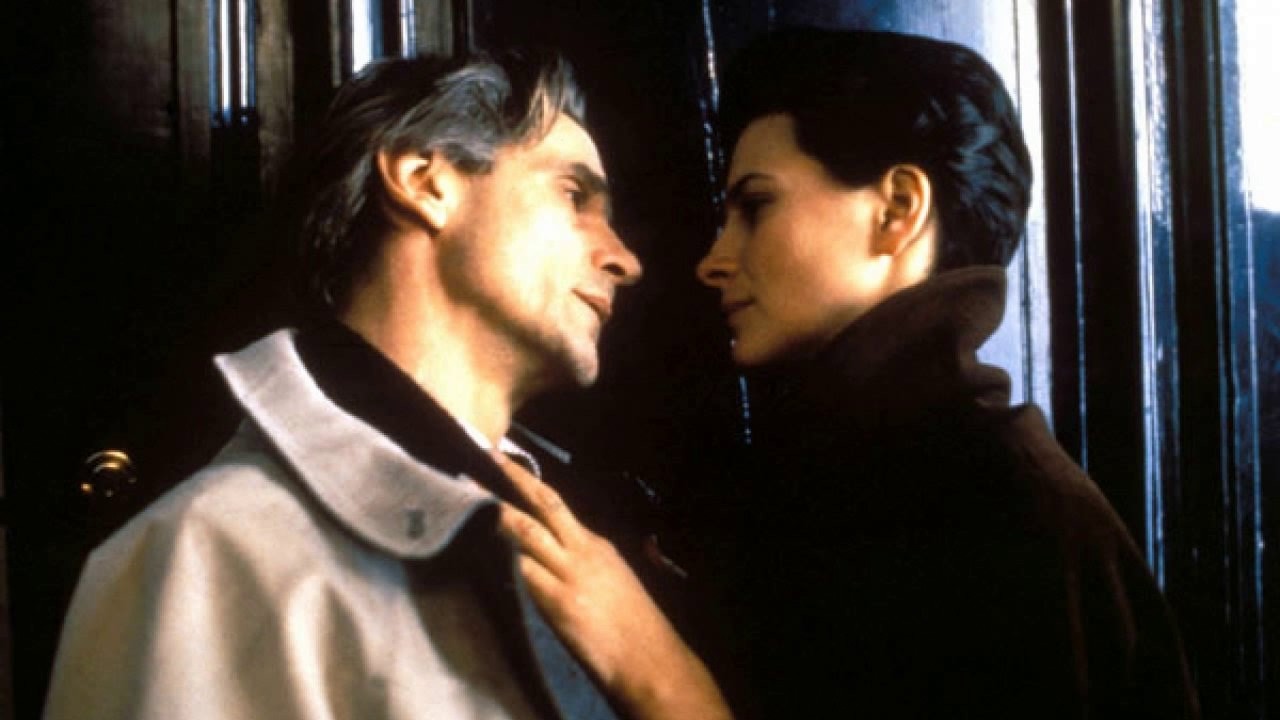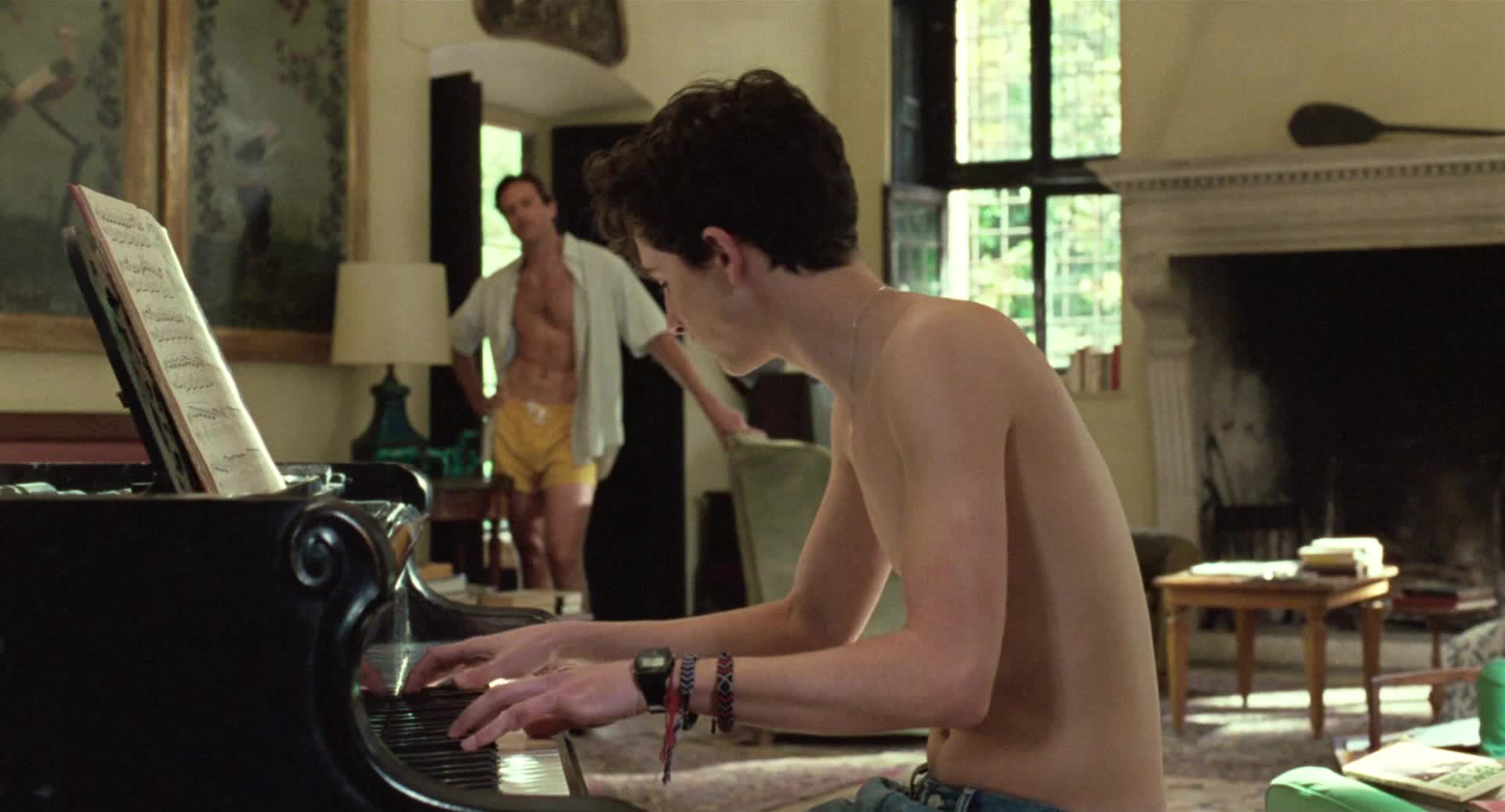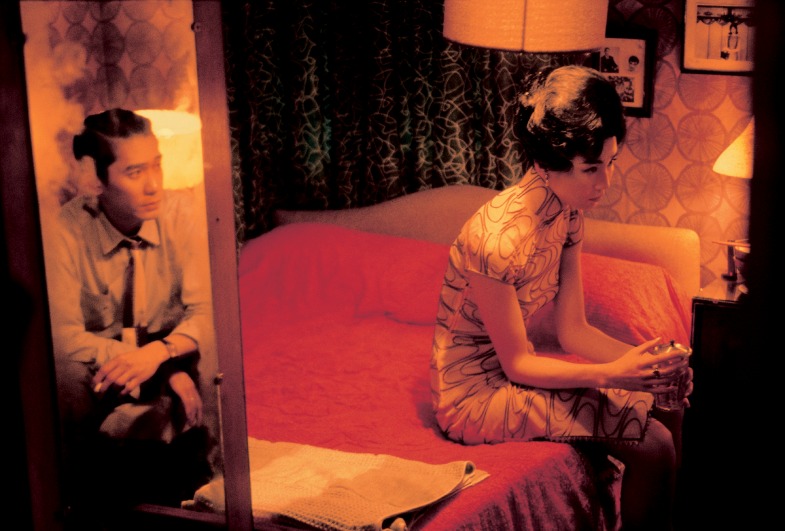5. Damage (1992) – Louis Malle

No stranger to the physical aspect and longing for sensuality, Malle explores a deeply provocative relationship amongst upper-class Europeans in the adaptation of Josephine Hart’s novel. The film explores the adulterous affair amongst Jeremy Irons, Juliette Binoche, and several others in a distant, unsettling atmosphere in the early 1990s.
Malle has expressed that this film has been his most difficult when it comes to directing his actors; because he felt so many emotions from the characters, he became too involved, much like the characters themselves. They constantly go too far to settle their need for sensual satisfaction.
For example, Binoche’s Anna tells Iron’s Stephen after a sexual encounter that her brother committed suicide after expressing desire for her during their teenage years, shortly after Stephen’s confession of wanting to touch her. It’s all about that physical contact between the characters in this world, their urges, the senseless direction for consequences, and the damage left behind because their sensuality simply couldn’t be controlled.
A third act that Miranda Richardson steals is all about her physicality to her husband, Iron’s character, which truly drives the point through the roof in the most tense way possible. Malle has never shied away from controversial or tough love stories, but in the twilight years of his life, he created a dark, almost sinister film on the negative effects of uncontrolled sensuality.
4. Live Flesh (1997) – Pedro Almodovar

This list could simply be titled ‘Pedro Almodovar’s Most Sensual Films’ as his characters, colors, mood, and photographs scream sensuality. Here, Almodovar adapts the Ruth Rendell novel to explore these themes in his under-appreciated 1997 film that explores the physical aspects of love, longing, and relationship in a way only he could.
The film tells the story of how of a criminal, Liberto Rabal’s Victor is still in love with Francesca Neri’s Elena, who is now in a relationship with Javier Bardem’s David, paralyzed from Victor’s gunshot. Thus begins this Almodovar passion-fueled noir romp where he explores how a man with no physical feeling can please a woman sexuality; therefore, it’s all about the sensuality. Ranging from tub toys to oral sex, Elena is pleased but lacks a connection.
As the story unfolds, and where we do get a fair share of sexuality and eroticism, it all boils down to the actual ‘live flesh’ of these characters. The motif of frames where naked bodies lie next to each other says it all on what the story is truly about at the heart.
The film is great example of how sensuality can be the central theme of a film and still explore the sexuality, passion, eroticism, and purely physical aspects of lovemaking amongst genre-induced films.
3. Nenette et Boni (1996) – Claire Denis

Told in her elliptical way of storytelling and dropping us directly into the lives of her character’s feelings without any explanation, Denis explores several stories about the longing for love, platonic love, and above all, the confusion of love.
It is the story of a regular collaborator, pizza maker Gregoire Colin’s Boni and his lust for the baker’s wife Valeria Bruni Tedeschi. Throughout the film, there is this sensual connection from him to her, from watching her hands covered in flour, her cleavage as she bends down to help a customer, and he even passionately caresses dough, imagining its her.
The latter may be the most sensual scene between a man and an edible piece of food. The second story deals with Boni and his visiting sister Nenette. Despite no sensuality and strictly platonic love, there is a deep understanding of their relationship and the two have a clear backstory, but it’s their brief moments of touching and comfort where we feel that intimacy.
Denis can always capture the physical relationship between people, allowing her cinematographer Agnes Godard to frame the character’s hair floating in water, the sweaty backs or necks, or the moving hands imagining they were somewhere else.
Denis allows for her characters to grow in her world of storytelling, but never more in a way that’s strictly sensual as opposed to her other films. There’s no sexual encounter between Nanette and the baker’s wife, only those brief interactions and eventual friendship. The rest is purely in the fragmented minds of our character.
2. Call Me By Your Name (2017) – Luca Guadagnino

The second film on this list by Guadagnino and the third and final of his Desire Trilogy, we witness the first love of Timothee Chalamet’s Elio and graduate student Armie Hammer’s Olivier over the course of the summer in northern Italy in 1983. As these two characters navigate around each other in the closest of spaces of proximity and intimacy, they finally realize the belonging they have to one another.
For much of the first half of the film, the two seem slightly at a rivalry or jealousy of the other. This doesn’t mean there is dislike, but a form of verbosity that explores what is happening between them.
As Elio dances into the summer night to gain Olivier’s attention, or Olivier giving Elio a quick back rub under the summer sun, they are constantly giving each other signals before they come to their senses and love for one another. The second half of the film flows just like a long August day with the accompaniment of Sufjan Stevens’ songs to its eventual conclusion.
However, Guadagnino once again creates a love story that seems so perfect we shouldn’t even witness it. For example, during their first lovemaking experience, the camera moves away to peer outside the summer night as their sounds fade away, only to see the interlocking bodies of Elio and Olivier in their purest fashion and maybe the definition of a sensual picture.
1. In the Mood for Love (2000) – Wong Kar-wai

To no surprise, a film in which the minimum can express the greatest. Wong’s masterpiece of two spouses forming a bond amongst their partners’ extramarital affair is one that films can only dream of. Told in images, poetry, and small moments, we get the feeling that we are truly in the mood for love in the most sensual way possible.
The film is fairly simple as the two console each other about their spouse’s affair with one another. As Wong alway stated, it’s “what and how” when you’re making a film. Therefore, take the motif of Tony Leung and Maggie Cheung’s walking slowly past one another on the stairs, framed by Christopher Doyle and Mark Lee Ping Bin set to Shigeru Umebayashi’s Yumeji’s theme.
Everything that needs to be said needs no dialogue; the eye exchanges surpass any sex scenes that could suffice, and the longing of these two characters wanting to explore but who don’t due to their morals is sensual in the purest form.
As the film unfolds, several motifs of this cinematic tonal poem enforce the sensuality aspect, but in a rare case, one doesn’t include Leung or Cheung. The use of objects, circular symmetry in the framing, or simply smoke under a fluorescent light evoke a sense of sensuality. But how can objects in the materialistic world increase the sensuality of its leads? It’s that use of mystery and artistry that has audiences going back.
The sensuality of the two leads never is played upon, which is why this film might be the most sensual of all time. Leave it up to Wong Kar-wai, who has been exploring this notion his whole career and will continue to do so.